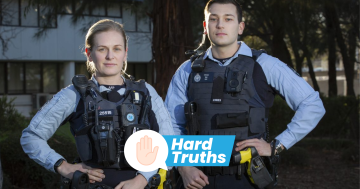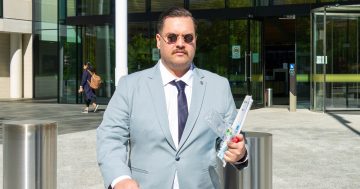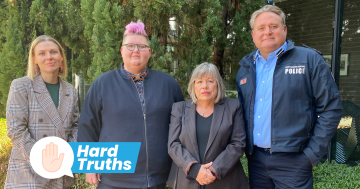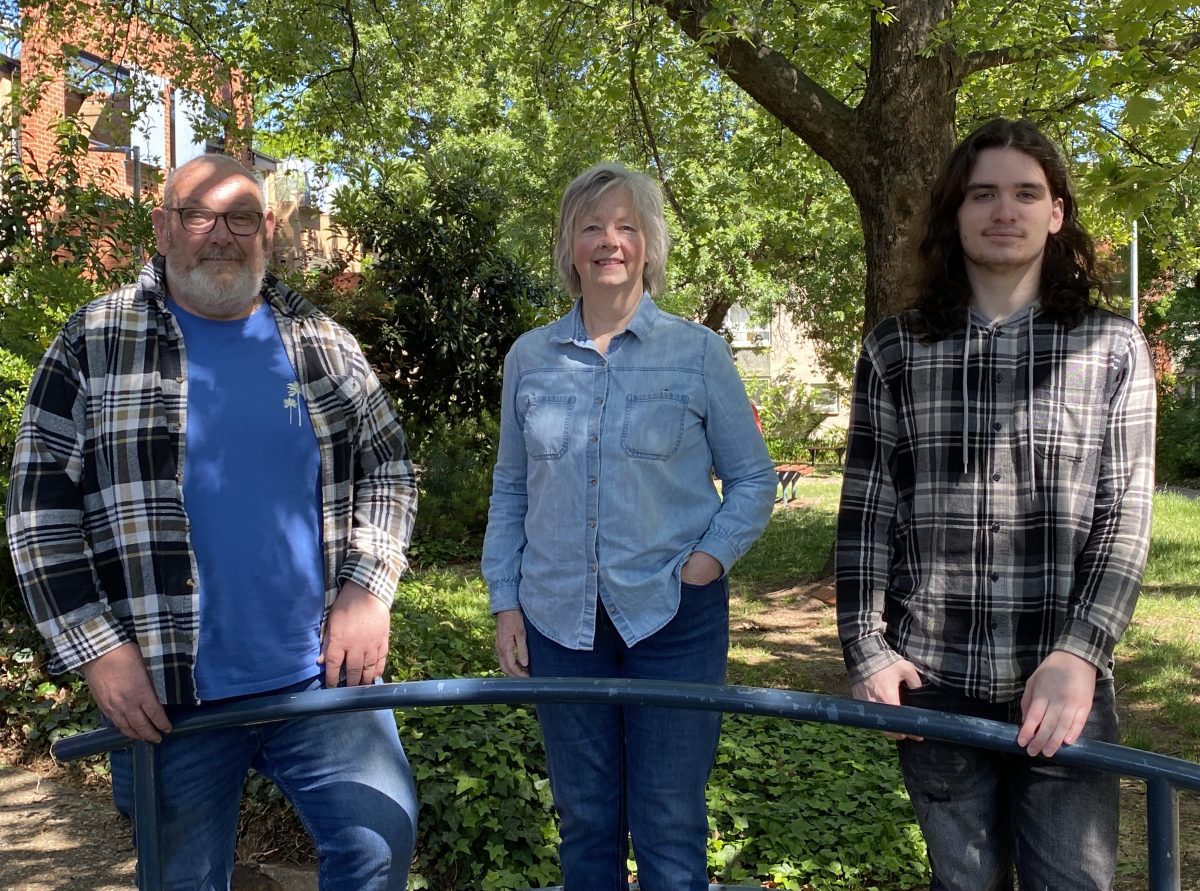
Condamine Court residents Craig Dinneen, Robyn Corbett and Ronan Johnson want to create more community in Canberra’s public housing complexes. Photo: Claire Fenwicke.
Robyn Corbett has lived in the public housing complex Condamine Court in Turner for the past year and, despite her initial misgivings, “absolutely” loves it.
“My passion and my financial circumstances collided, so I ended up in public housing, but I’m going ‘yes!’ because I am so grateful that it is an option here and given me an opportunity to get to know people,” she said.
Robyn has a background in photography and community development overseas and is now using her expertise to create a stronger community in the complex she calls home.
Condamine Court has attracted negative attention over the years due to reports of violence, vandalism and drug abuse.
Robyn herself has witnessed dangerous and “gross” things at the complex but said one perspective has been missing: “What about the people who are just overcoming in amazing ways and kind [ways]?” she asked.
“[Some behaviour] does grieve me, but I do wonder, ‘What’s the back story?'”
Robyn has taken it upon herself to photograph and document the stories of those living at Condamine Court.
She said many seemed to have the same theme.
“There is a common thread of family breakdown … somewhere along the line, either in their own childhood or, as in my case, in adult years,” Robyn said.
“They’ve fallen between the cracks, and sometimes it’s just a human connection that can make a difference between staying stuck or … [being] pointed in the right direction.”
Robyn experienced family violence and a “messy” divorce decades ago from which she has never recovered financially.
The help she was given through community and support services has made her want to create stronger bonds with people in public housing.
“I’d really love to be able to build that community among ourselves, so if there is a trouble spot, we can be the first ones there and say, ‘Do you want some soup? Do you need some help with mental health or addictions or something?’ and point them in the right direction if we can,” Robyn said.
“First stop, we’re neighbours … we’re all here together, so let’s make it gorgeous.”
One of her neighbours is Craig Dinneen, who grew up in foster care after his alcohol-addicted parents’ marriage fell apart.
He experienced drug and alcohol abuse as a teenager but overcame his addictions.
Craig can often be seen from the street tending to a community garden he created.
“I can have a crap day, and a crap day for me can be a million and one things, and I get out in the garden, and it’s all gone,” he said.
“It’s not that it’s disappeared, but I can be pulling out weeds, pruning roses or fertilising … and I just love that.”
He’s lived at Condamine Court on and off for about three years, having spent some time dealing with his mental health issues and in other housing after his unit was broken into one night. He was also stabbed in the stomach by the intruders.
Despite his traumatic experience, he loves Condamine Court.
“At first I didn’t … there are many issues there, we can’t deny that, but let’s try something new, let’s try something different because the system at the moment isn’t working and it hasn’t worked for many, many decades,” Craig said.
“Let’s make Condamine Court [and our other public housing complexes] a better place to live – more secure, safer places to live.”
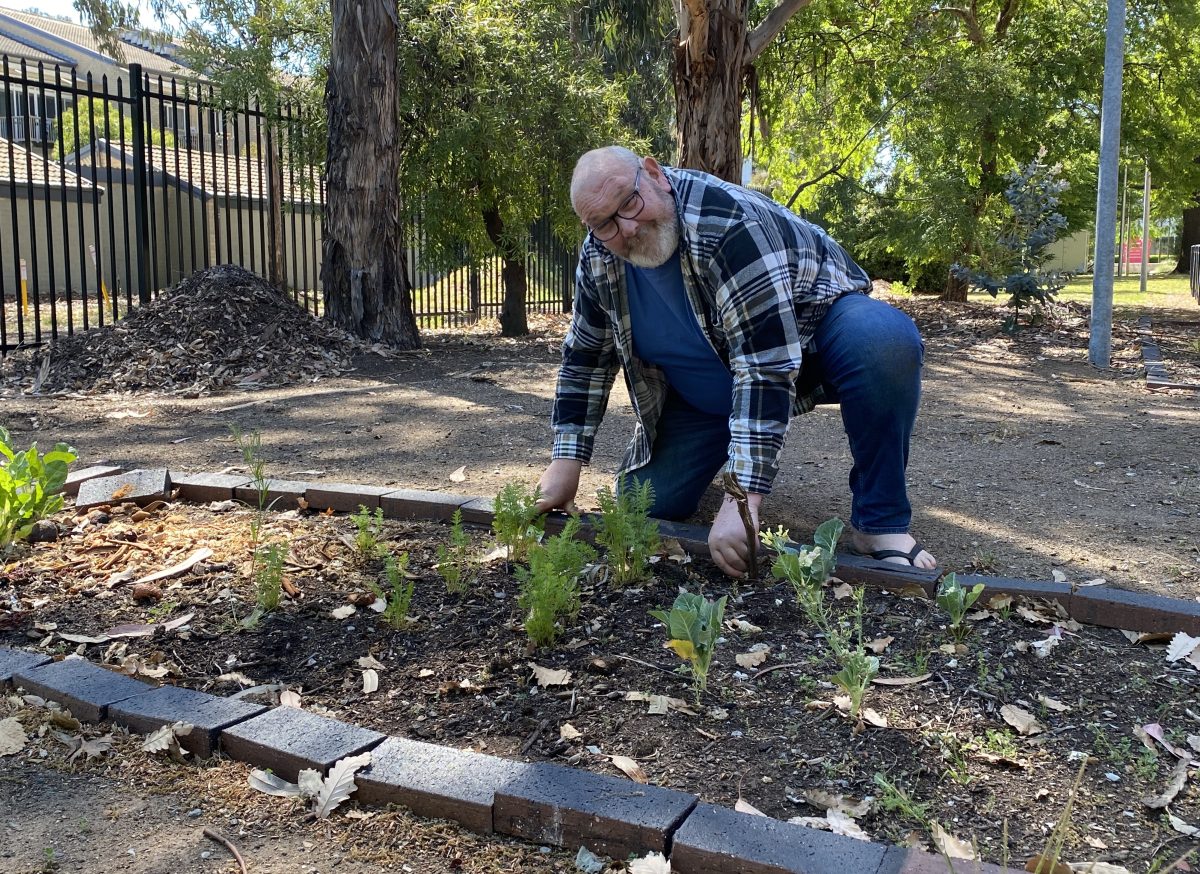
Craig Dinneen’s community garden at Condamine Court. Photo: Claire Fenwicke.
After some conversations with Bunnings, Craig will be getting the start of a new and improved community garden at the complex, which he hopes will bring even more people together.
He’d love for more people to educate themselves about public housing tenants and not just assume they’re there because of their choices.
“I’d love to have people get to know tenants in public housing and get to know why they end up there, and not just assume they’re drug addicts, not just assume they [have] mental health [issues], all the bad stuff – education is powerful,” Craig said.
“Get to know them. All you have to do is say ‘hello’ and start from there.”
Fellow tenant Ronan Johnson agrees strengthening the community both inside and outside of Condamine Court would be a positive.
The 20-year-old has been couch surfing, living on the streets and in refuges since he was 18, leaving home due to his mother’s abusive husband.
While he stayed with friends, he didn’t want to intrude, and his refuge housing fell through after his employer closed its Canberra office.
After two months of job searching, he’s secured regular work as a trivia host.
“A lot of it, when it comes to homelessness, sadly comes down to luck,” Ronan explained.
“Homelessness is definitely not something I would want to do again … I definitely prefer having a roof over my head.”
By speaking with media and capturing the stories of Condamine Court’s residents, Robyn hopes to see more community-building projects pop up at public housing complexes.
She also wants hubs set up at all complexes to help people who might be causing trouble so they can more easily access addiction or mental health support services.
It’s also another chance to spread kindness.
“We have had broken family situations, but hey, we’re family, so we can look out for each other,” Robyn said.
“I think building that community strengthens our chances of moving forward.”
Ultimately, communication, listening and collaboration are central to Robyn’s vision: “I just think we can build a safer Canberra.”












